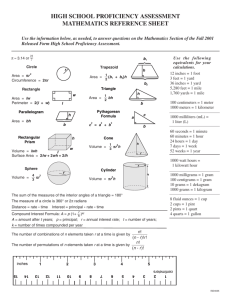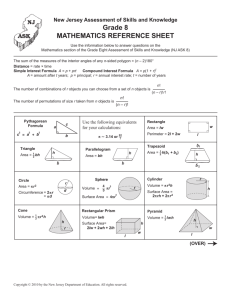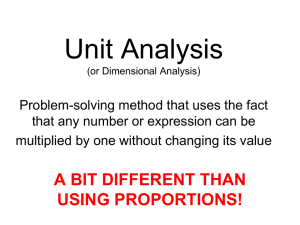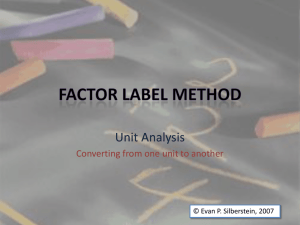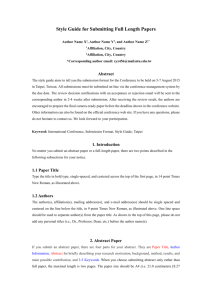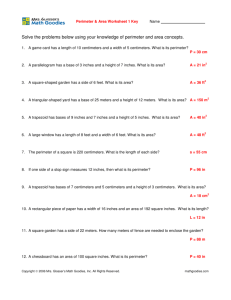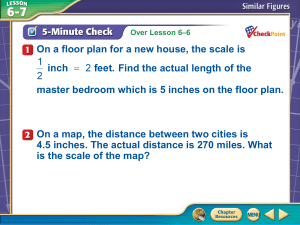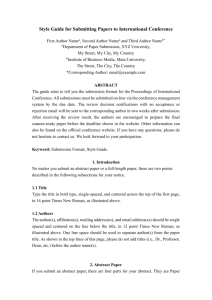6.RP.3d Lesson Conversions with Inches and Centimeters
advertisement
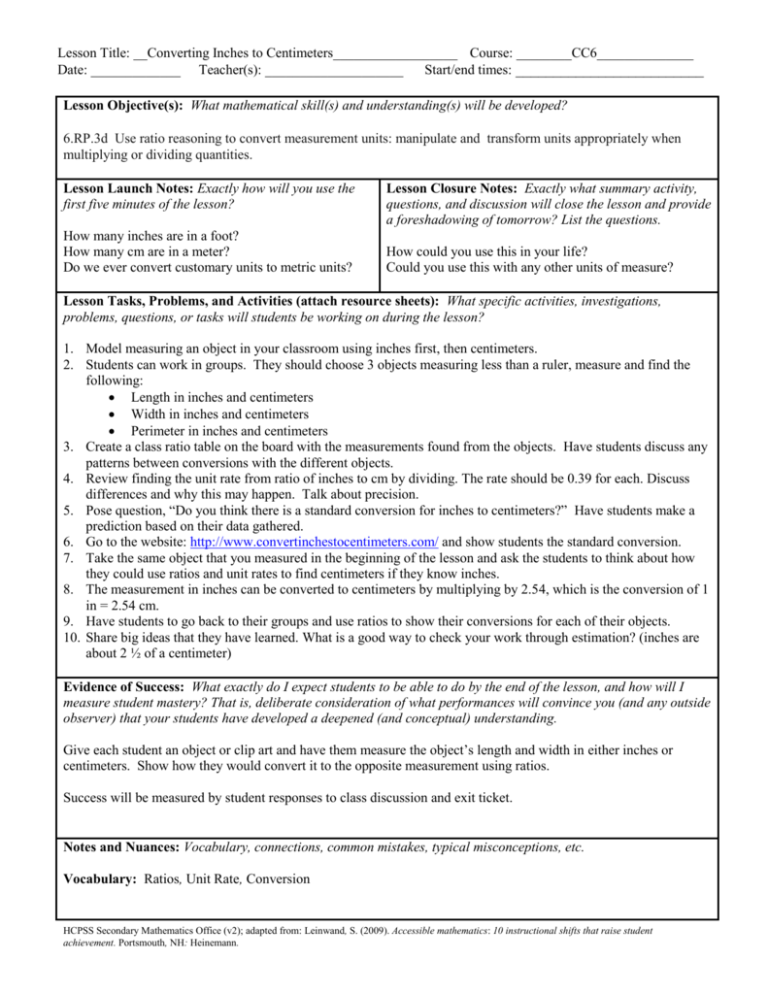
Lesson Title: __Converting Inches to Centimeters__________________ Course: ________CC6______________ Date: _____________ Teacher(s): ____________________ Start/end times: _________________________ Lesson Objective(s): What mathematical skill(s) and understanding(s) will be developed? 6.RP.3d Use ratio reasoning to convert measurement units: manipulate and transform units appropriately when multiplying or dividing quantities. Lesson Launch Notes: Exactly how will you use the first five minutes of the lesson? How many inches are in a foot? How many cm are in a meter? Do we ever convert customary units to metric units? Lesson Closure Notes: Exactly what summary activity, questions, and discussion will close the lesson and provide a foreshadowing of tomorrow? List the questions. How could you use this in your life? Could you use this with any other units of measure? Lesson Tasks, Problems, and Activities (attach resource sheets): What specific activities, investigations, problems, questions, or tasks will students be working on during the lesson? 1. Model measuring an object in your classroom using inches first, then centimeters. 2. Students can work in groups. They should choose 3 objects measuring less than a ruler, measure and find the following: Length in inches and centimeters Width in inches and centimeters Perimeter in inches and centimeters 3. Create a class ratio table on the board with the measurements found from the objects. Have students discuss any patterns between conversions with the different objects. 4. Review finding the unit rate from ratio of inches to cm by dividing. The rate should be 0.39 for each. Discuss differences and why this may happen. Talk about precision. 5. Pose question, “Do you think there is a standard conversion for inches to centimeters?” Have students make a prediction based on their data gathered. 6. Go to the website: http://www.convertinchestocentimeters.com/ and show students the standard conversion. 7. Take the same object that you measured in the beginning of the lesson and ask the students to think about how they could use ratios and unit rates to find centimeters if they know inches. 8. The measurement in inches can be converted to centimeters by multiplying by 2.54, which is the conversion of 1 in = 2.54 cm. 9. Have students to go back to their groups and use ratios to show their conversions for each of their objects. 10. Share big ideas that they have learned. What is a good way to check your work through estimation? (inches are about 2 ½ of a centimeter) Evidence of Success: What exactly do I expect students to be able to do by the end of the lesson, and how will I measure student mastery? That is, deliberate consideration of what performances will convince you (and any outside observer) that your students have developed a deepened (and conceptual) understanding. Give each student an object or clip art and have them measure the object’s length and width in either inches or centimeters. Show how they would convert it to the opposite measurement using ratios. Success will be measured by student responses to class discussion and exit ticket. Notes and Nuances: Vocabulary, connections, common mistakes, typical misconceptions, etc. Vocabulary: Ratios, Unit Rate, Conversion HCPSS Secondary Mathematics Office (v2); adapted from: Leinwand, S. (2009). Accessible mathematics: 10 instructional shifts that raise student achievement. Portsmouth, NH: Heinemann. Lesson Title: __Converting Inches to Centimeters__________________ Course: ________CC6______________ Date: _____________ Teacher(s): ____________________ Start/end times: _________________________ Resources: What materials or resources are essential Homework: Exactly what follow-up homework tasks, for students to successfully complete the lesson tasks or problems, and/or exercises will be assigned upon the activities? completion of the lesson? Rulers Objects less than the size of a ruler Calculators Your parents plan to buy you a bike. Bike sizes are from metric measurements. A small frame would fit an average height of 46 cm, a medium frame would fit an average height of 50 cm, and a large frame would fit an average of 56 cm. Find your measurement in inches, convert it to centimeters and pick the frame that would suit yourself. Lesson Reflections: What questions, connected to the lesson objectives and evidence of success, will you use to reflect on the effectiveness of this lesson? Are students able to understand how to convert from one measurement to another? Do students have a variety of strategies to use to solve conversion problems? What do I need to do tomorrow based on my students’ current understanding of conversions? HCPSS Secondary Mathematics Office (v2); adapted from: Leinwand, S. (2009). Accessible mathematics: 10 instructional shifts that raise student achievement. Portsmouth, NH: Heinemann.

